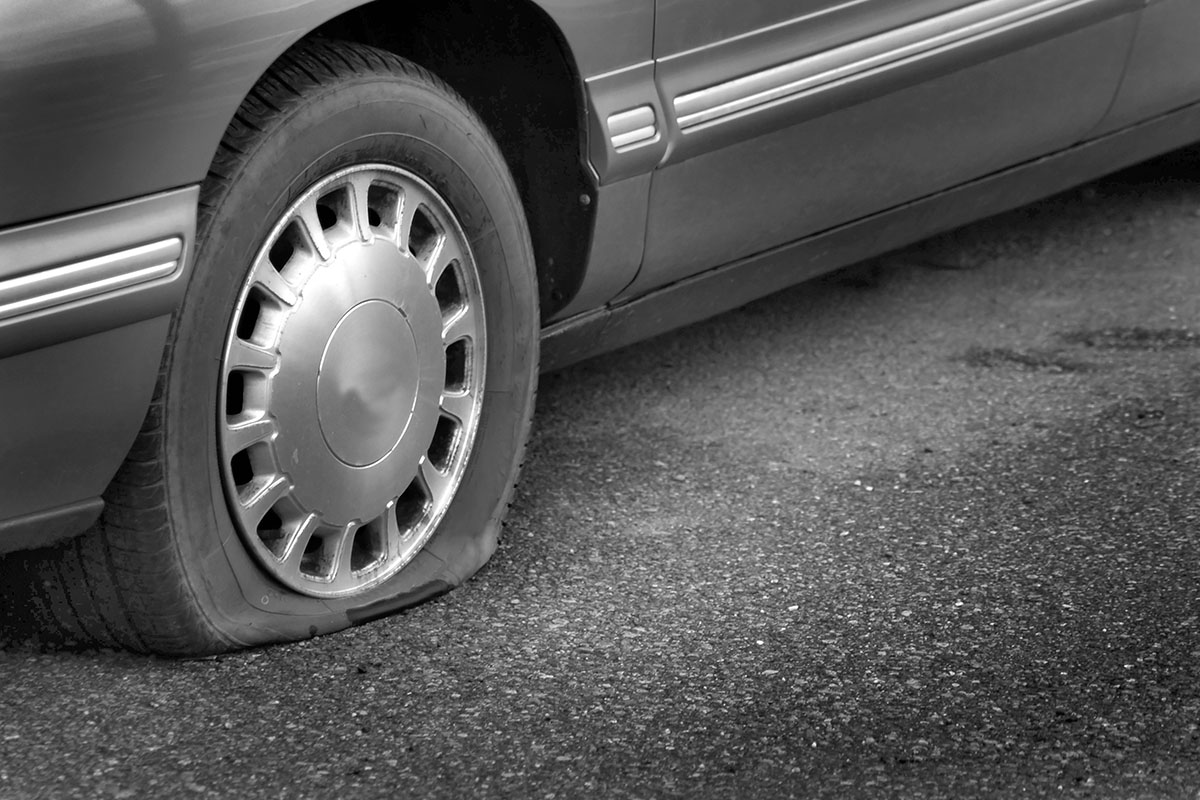Preventing a tire blow out is simple and easy with just a few things to check. Watch your pressure and weight and do not ignore warning signs.
Check Your Pressure
Low tire pressure increases friction causing the tire to overheat. Overheating puts extra stress on the materials the tire is made of. The hotter the road surface the greater the danger of blowing a tire and that is why the summer months are “blowout season”.
Finding the Proper Rate of Inflation
The proper PSI for your tires is stamped on the tire’s sidewall. It can also be found in the owner’s manual or your vehicle’s tire placard. The placard might be located on the gas cap door, the edge of the vehicle door, glove box, or door post.
Vehicles have a Tire Pressure Monitoring System (TPMS). Do not rely on TPMS because it does not activate until 25% of the air has been lost which might be too late. If your tire pressure is 20% below the recommended PSI have a mechanic break it down and inspect the inside.
Checking Tire Pressure
Make sure your tires are cold before checking the pressure. Remove the valve stem cap and place the gauge securely on the valve stem. The sound you hear while checking the pressure is air leaving the tire. Remove the gauge from the valve stem as soon as you have your reading.
Tire pressure should be measured every 30 days. Compare your reading against the recommended inflation. Add air to under-inflated tires.
Watch Your Weight
Another reason that summertime is blow out season is that vehicles tend to be laden down with extra weight as people take trips or pick-up supplies for projects around the house. More poundage puts more stress on tires, especially improperly inflated tires increasing the blow out risk.
The maximum weight your vehicle can hold or its Gross Vehicular Weight Rating is found on the same placard as the tire inflation rate. When calculating how heavy a burden your car will be carrying don’t forget to factor in the weight of passengers.
Do Not Ignore Warning Signs
Hitting a pothole or other raised road surfaces squeezes the tire between the wheel and edge of the obstacle. This can comprise the internal structure of a tire. If the damage is not immediately obvious that does not mean that the impact did not cause a slow leak. An air leak is a warning sign of a possible blowout later on.
After striking anything with your tire at a high rate of speed check your tire pressure. If you suspect tire damage the tire should be checked by your mechanic or tire shop.
Summary
Keeping your tires properly inflated is vital to preventing a blowout. The risk of a blowout is greater during the hottest months. The rate of inflation for your tires can be found on the tire, on the vehicle tire placard, and in the owner’s manual. Before loading your vehicle check the Gross Vehicular Weight Rating. If you suspect damage to your tire have the tire inspected.


